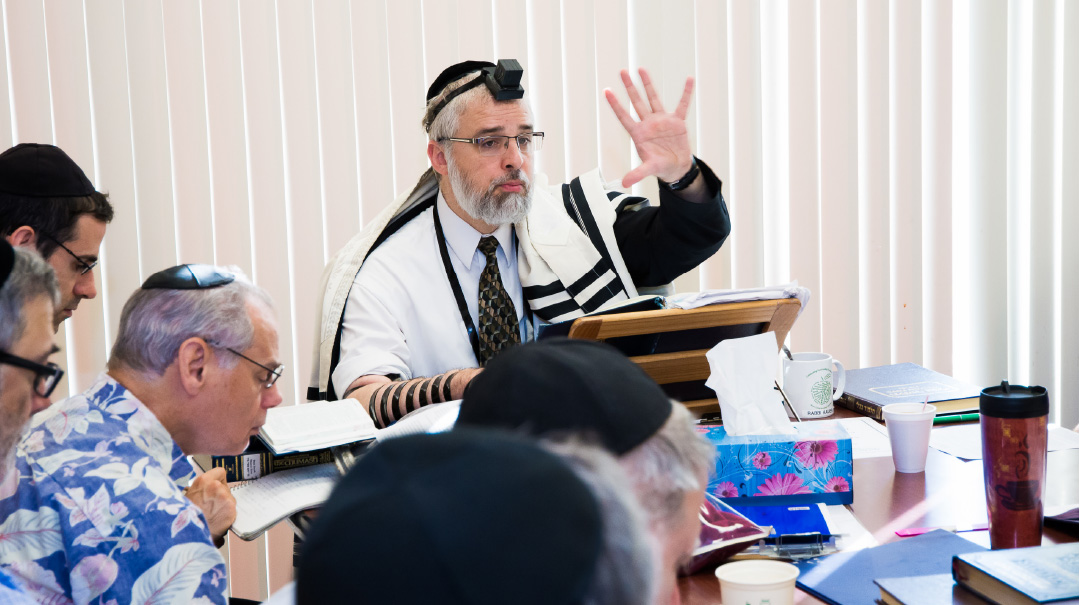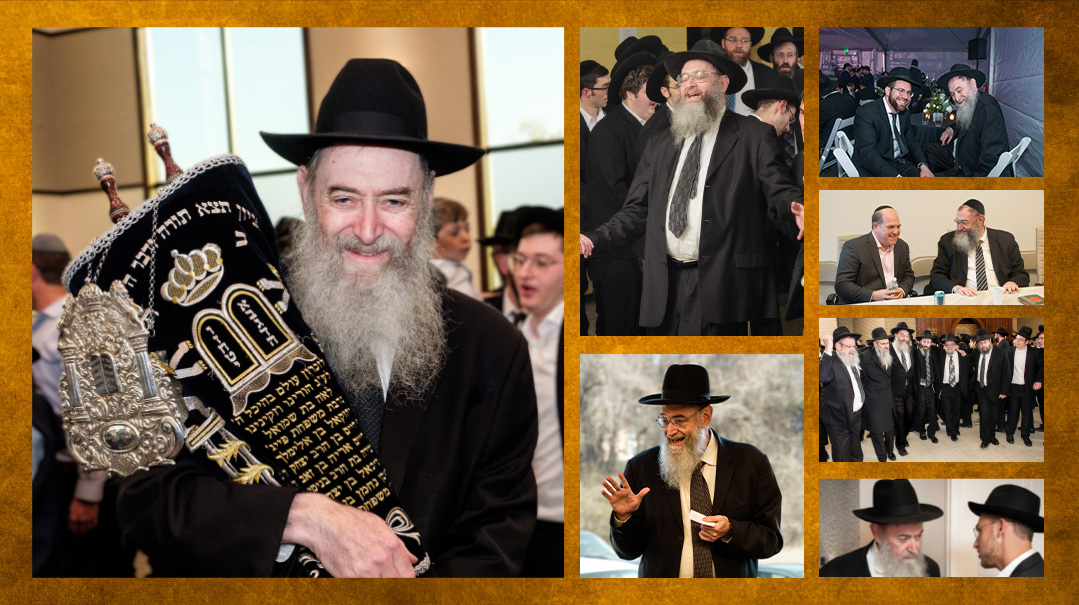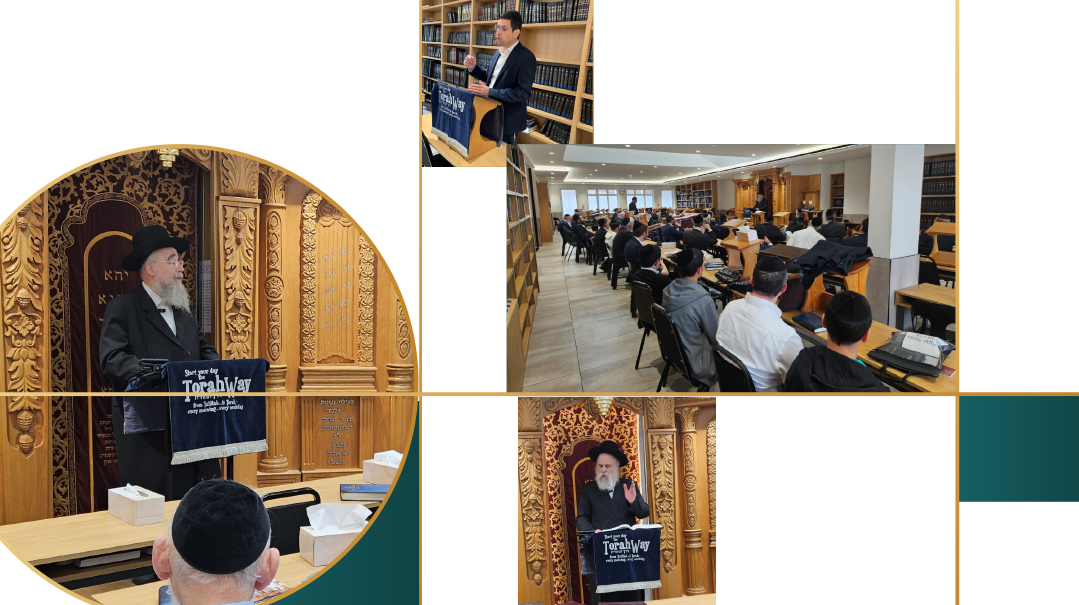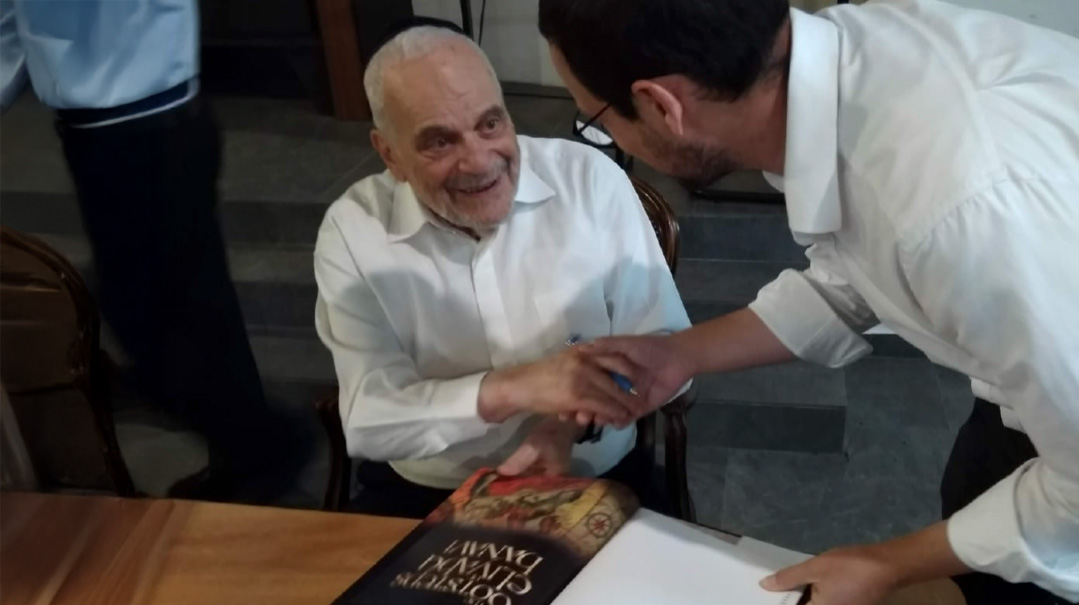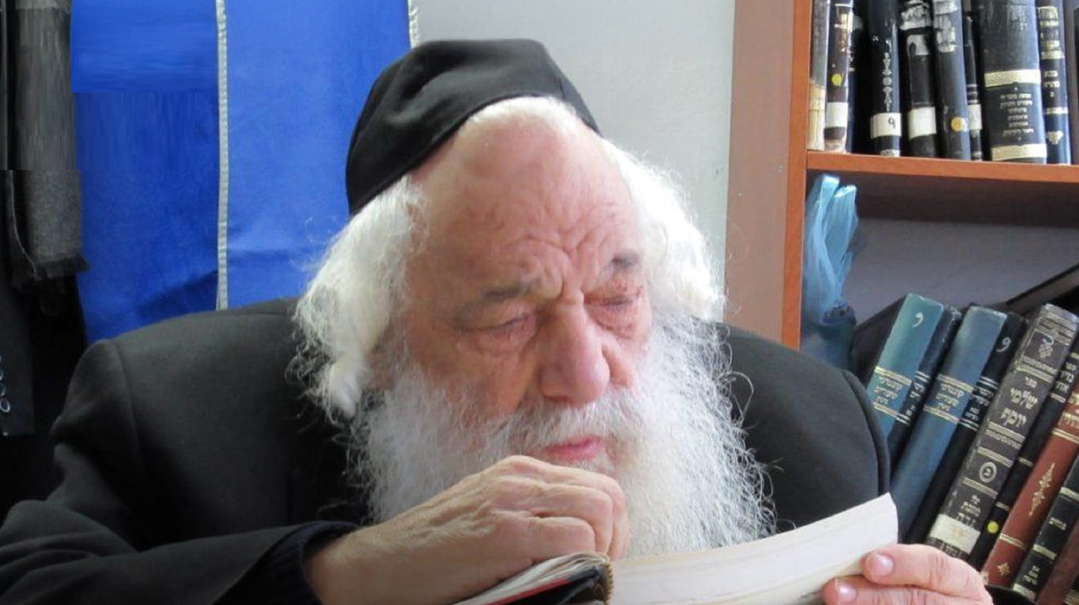Living the Dream
| April 26, 2022Rav Grainom gave us a glimpse into the steadfast emunah and bitachon that accompanied him always
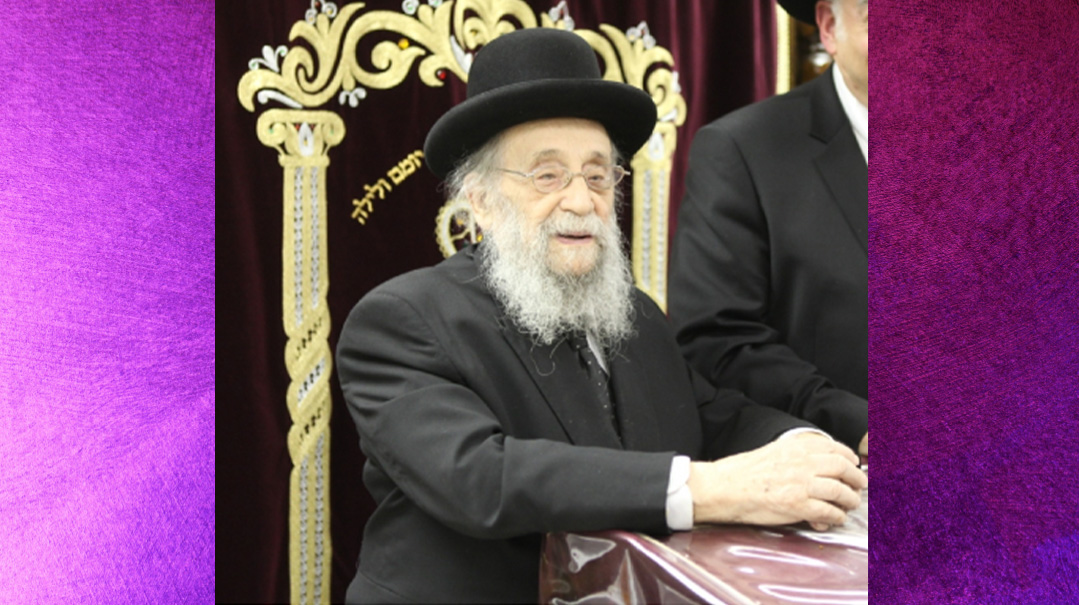
T
oday’s fast-paced digital world can seem light-years away from prewar Novardok. But Rav Grainom Lazewnik ztz”l, who was niftar a few days after Purim at age 106, gave us a glimpse into a world that once was.
Until his final days, one could enter Mosad Adar Gbyr, his unassuming shtibel on East 9th Street in Flatbush, and witness this centenarian quietly immersed in his learning, bent in the same position he had maintained for close to a century. Past and current mispallelim would bring their children for brachos, or to just catch a glimpse of this ember of a bygone era.
While he was always happy to share a memory, a vignette, an eitzah, or a kind word, he meticulously calculated every minute of his time. The Novardok imprint, left on him by his great rebbeim in the old country, permeated his very being, in a way that was as much a part of him in his twilight years, as in his dawn, when he was a young boy learning in Pinsk.
R
av Grainom grew up in Lenin, Poland (though due to shifting borders today the town is part of Belarus). As a young teenager he went to learn in Pinsk, in a branch of the Novardok yeshivah system founded by the Alter of Novardok, Rav Yosef Yoizel Horowitz. He entered the shiur of Rav Yaakov Yisrael Kanievsky, later renowned as the Steipler Gaon, where he studied for a year and a half. While at the time he didn’t form a close relationship with the Steipler, his rebbi left a strong impression on him, and Rav Grainom felt deeply connected to him many decades later.
After a few years in Pinsk, Rav Grainom followed a group of older bochurim who went to learn in another branch of the Novardok network in Mezritch. He was offered the opportunity to join the Baranovitch yeshivah and learn under Rav Elchonon Wasserman and the mashgiach Rav Yisrael Yaakov Lubchansky, but declined, concerned that the mehalech there would clash with his Novardoker chinuch.
Instead, he continued learning in Mezritch, where he took advantage of both the beis medrash as well as the adjacent beis hamussar, a room dedicated for working on one’s middos and personal avodah. It was there that he nurtured his mind and soul with wellsprings of knowledge and faith that would ultimately sustain him through the war years.
In the summer of 1937 he received mail from the Polish Army — the dreaded draft notice. Rav Dovid Bleicher Hy”d, his rosh yeshivah in Mezritch, was mechazek him, bolstering his confidence and resolve to remain strong in his Yiddishkeit through the difficulties he would face.
He was eventually released and returned to his hometown, Lenin, where he would spend the next two years learning together with the town’s rav, Rav Moshe Milstein. For a long while he was able to avoid the constant threat of deportation to a labor camp, as the Rav insisted to the Jewish Council that they must leave “the town’s only ben Torah.”
Ultimately, in the summer of 1942 his summons came, and together with his brother and some other locals, he joined the labor unit. After a few months, upon hearing that his hometown had been decimated by the Nazis, he and his brother planned a high-risk escape, and spent the next three years hiding in forests, even joining a Russian partisan group.
Even the daunting conditions he found himself in didn’t sway his meticulous mitzvah observance. Mordechai Zaitchik, a fellow partisan, recalls Rav Grainom in his memoir, From a Partisan’s Holocaust Survival Diary:
“As long as Grainom Lazewnik was with us we did not have to concern ourselves with the calendar. We were confident in his ability to keep track of the holidays. In all our wonderings we never saw him eat anything non-kosher. He was scrupulous in his observance of mitzvos…”
H
e documented his miraculous survival in a small kuntres he authored entitled “Pirsumei Nisei,” which appears in the back of the sefer Chiddushei Rabbeinu Yitzchak bar Avrohom Mi’Narbonna, Chullin (Machon Yerushalayim 5749), which Rav Grainom edited. It was later translated by his son into English. (An extended interview is also printed in Trails of Triumph II by Rabbi Dov Eliach.)
He shares in his account that his goal in publishing the booklet was not so much to tell his story as to publicize what he refers to as “open-hidden” miracles. He shares different dreams he had that proved to foreshadow events, as well as the times pesukim would suddenly, seemingly prophetically, spring to his lips guiding him to the right decisions. Each anecdote is sprinkled with quotes from Tanach and Chazal, the lens through which Rav Grainom experienced the events around him.
In truth, his memoir tells two tales. It tells of his miraculous survival, but reading between the lines, the reader is privy to his inner world. Through his pen, Rav Grainom gave us a glimpse into the steadfast emunah and bitachon which accompanied him always, allowing him to experience every moment as another opportunity to connect with his Creator.
After the war, he was asked by Rav Gershon Liebman, another famed Novardoker, to join him in opening a yeshivah for his surviving talmidim in Salzheim, Germany. Rav Grainom joined Rav Gershon as rosh yeshivah, despite not having opened a Gemara for four years.
Eventually, he received a visa to travel to America, where he settled in Brooklyn, married, and raised a family. He joined up with Yeshivas Beis Yosef, founded by Novardok talmidim, taught for many years in Yeshiva of Eastern Parkway, and eventually opened a shul of his own.
He maintained a steady daily routine, with a schedule filled with round-the-clock chavrusas, regular shiurim, and a stream of visitors who came to seek his wisdom, his warmth, or his brachah. For many years he maintained a chavrusa over the phone with whom he finished several rounds of Shas.
E
ven at an advanced age, he was determined to keep toiling in Torah. It was well past midnight on a Friday night, just a few years ago, when the grandson attending to Rav Grainom gently suggested to his aged grandfather that he should go to sleep. Rav Grainom, immersed in a sugya, brushed him off, explaining that he hadn’t yet reached clarity in the inyan. Only an hour later did he arise from his seat and close his Gemara.
Not long ago, a young talmid chacham came to speak with him in learning. Rav Grainom told him he’d be happy to speak to him, but he’d have to keep their meeting brief, because he had a chavrusa starting in a few minutes.
He once commented to his chavrusa that felt that he would live until 110. He explained that this was the age that Yosef Hatzaddik had lived until. Rav Grainom felt that his own struggles with Torah and mitzvos as a partisan during the war, and his ensuing deliverance, bore strong resemblance to those of Yosef’s trials.
Like Yosef, his dreams portended the future, and not only during the war.
A number of years ago, when he was approximately 90, he was slated to undergo a serious open-heart surgery. He was understandably highly concerned about the success of this procedure, but the fear abated when his rebbi, the Steipler, appeared to him in a dream, which Rav Grainom interpreted as a sign that he would recover.
About ten years later, Rav Grainom found himself, again, set to undergo a difficult medical procedure. Concerned that the dream would not recur, he penned a letter to Rav Chaim Kanievsky ztz”l, his rebbi’s son. In his letter, he described what had happened ten years prior and requested a blessing from the tzaddik. Reb Chaim, as reported by those present at the time, was clearly bemused by this letter. With a big smile, he wrote back a response.
While we don’t know what the response was, Reb Chaim’s brachah was fulfilled, sustaining Rav Grainom for another six years. A few days after Purim, in the shadow of the petirah of the Sar HaTorah, Rav Grainom, too, returned his neshamah to his Creator.
Yehi zichro baruch.
(Originally featured in Mishpacha, Issue 908)
Oops! We could not locate your form.

